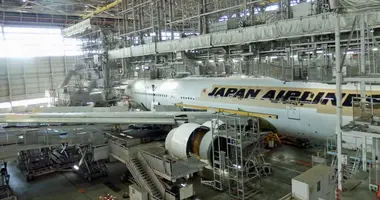Sumida Hokusai Museum
The Hokusai Museum in Tokyo's Sumida ward presents the life and works of one of Japan's most famous artists, Katsushika Hokusai (1760-1849), in an ultra-modern gallery.
Sumida Hokusai Museum すみだ北斎美術館
The ultra-modern Sumida Hokusai Museum near Tokyo's Ryogoku district is dedicated to the life and work of the late-Edo period artist Katsushika Hokusai (1760-1849), who single-handedly defined Japanese art for the world in the nineteenth century.
This architecturally striking museum set in a small play park follows the trend set by the Tokyo Skytree in creating a new, cutting edge face for the once-drab east-end ward of Sumida.
 The Sumida Hokusai Museum
The Sumida Hokusai Museum
 Self-portrait by Hokusai
Self-portrait by Hokusai
Exhibits
See what's on now at the Sumida Hokusai Museum.
For most of his life, Hokusai took his inspiration from everyday life, creating lively, colorful depictions of people and street scenes, marked by a lighthearted, often humorous, mood. Many of these include erotic shunga prints, that were popular in pre-modern Japan. Another genre of his work features the kind of drawing that is seen as the precursor to the style of modern manga comics. It was only later in life, in his 60s, that Hokusai produced the landscape works he is best known for today, such as the Thirty-Six Views of Mt. Fuji series, the Great Wave off Kanagawa, and Fine Wind, Clear Morning.
There are seven permanent exhibits at the Sumida Hokusai Museum. Hokusai was born and lived in Sumida ward, so the first section, "Sumida and Hokusai," portrays his life here, and includes a full-scale model of the house where he lived and worked, and a mechanical mannequin of the great man himself bent over on the floor wielding a brush.
The remaining six sections show stages of Hokusai's life and work - which was marked by his very frequently changing his artist's name, and concomitant changes of artistic focus.
There is plenty of English-language signage in the museum, although the several video installations are Japanese-language only. The cutting edge feel of the architecture is present, too, in some high-tech displays, such as touch screen panels that allow the visitor to virtually flip through books of Hokusai's pictures.
The Museum souvenir shop offers a large number of quality books (all in Japanese) as well as imaginative Hokusai-related goods including even jigsaw puzzles of some of his works.
One annoying quirk of the building's design is the lack of stairs from the first floor, where the ticket office is, to the second floor exhibition space, necessitating waiting in line for a too-small elevator.
(Read about the Hokusai Museum in Obuse, Nagano prefecture.)
 Relaxing at the Sumida Hokusai Museum
Relaxing at the Sumida Hokusai Museum
Hours
9.30am - 5.30 pm (last entry 5pm). Closed Monday (except when Monday falls on a national holiday, in which case open Monday and closed the next day, Tuesday). Closed December 29 - January 1.
Admission
400 yen for adults, 300 yen for school age, university/college students, and over 65s. Extra (optional) charge at times of special exhibitions.
Access
5 minutes walk from Exit A3 of Ryogoku station on the Toei Oedo subway line.
9 minutes' walk from the East Exit of Ryogoku Station on the JR Chuo-Sobu Line.
Right in front of "Sumida Hokusai Bijutsukan-mae" bus stop on the Sumida Loop Bus (Southern Route), which leaves from the North Exit of Kinshicho station.
22-7-2 Kamezawa, Sumida-ku, Tokyo 130-0014
Tel. 03 5777 88600 (8am - 10pm)
 Hokusai Museum, Sumida, Tokyo.
Hokusai Museum, Sumida, Tokyo.
Nearby the Hokusai Museum
The Edo-Tokyo Museum is just 5 minutes' walk west of the Hokusai Museum, in the Ryogoku district, famous for being the home of sumo wrestling in Japan. Ryogoku Station is about 9 minutes' walk west, and right next to Ryogoku Station is the national sumo stadium, the Kokugikan.





























